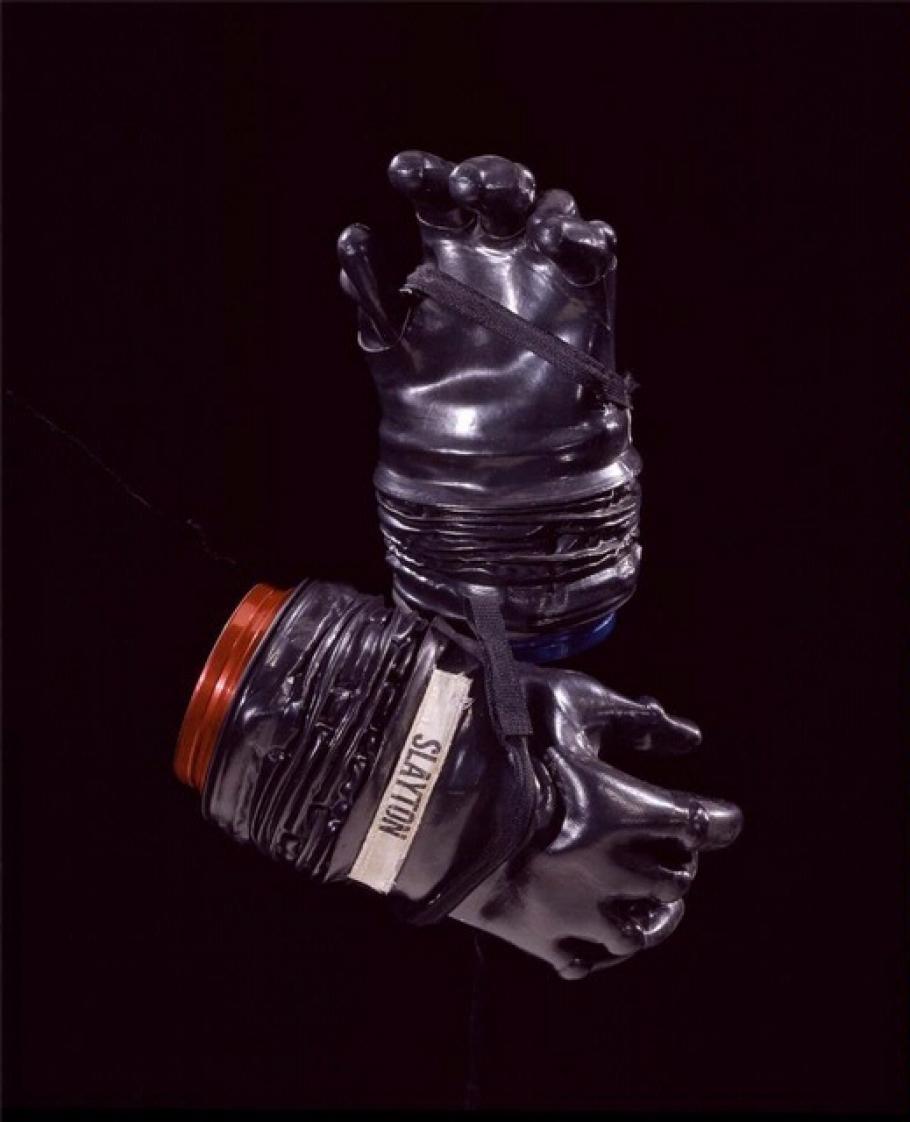This past month National Air and Space Museum and Museum Conservation Institute (MCI) interns were able to travel to Frederica, Delaware to visit the International Latex Corporation Dover (ILC). It is one of several companies that produces the "soft materials" or non-metal components of spacesuits for the National Aeronautics and Space Administration (NASA). ILC was started in 1932 by Abram Spanel, and eventually made latex products to support the Allied troops in World War II. While today the company creates a range of products from personal protection equipment (PPE) to materials for the pharmaceutical industry, it is probably best known for producing spacesuits for the Apollo program. That means that ILC was responsible for designing and making the spacesuit that Neil Armstrong wore when he first stepped on the Moon in 1969.
Our visit to ILC was in part inspired by our desire to know how a spacesuit is made, and it was further prompted by a current research project to determine why many of the aluminum wrist disconnects of the Museum’s spacesuit gloves (the colored metal ring of the glove that connects it to the spacesuit) are corroding. Part of that research includes understanding the history and methods used to fabricate the gloves.
During our visit, interns were able to tour the facilities. ILC has its own onsite gallery featuring military and aerospace artifacts, and some of these objects are on loan from the National Air and Space Museum. Our guide Bill Ayrey, a Product Testing Engineer at ILC who also volunteers his time for historical research projects at the Museum, discussed how ILC competed with other companies, such as David Clark and B.F. Goodrich, to fabricate the winning spacesuit design in the 1960s. We also learned about the history of the ”Space Race”, and how ILC developed new products to better protect and provide comfort for men and women traveling to space. We even had a chance to hold a pair of 50 lb. pants from the 280 pound space station suit. Interns also got a special behind-the-scenes preview of the factory spaces. Museum and MCI interns learned how patterns are cut and about the different materials used for the space gloves. We observed how the gloves are sewn together, most of which is done manually rather than by machine. Upon completion, gloves are also tested by hand (requiring a hundred or more finger, wrist, and hand flexes) to ensure the integrity of the materials and to “break-in” the gloves for their intended astronauts. Our hands are sore just thinking about it!
Thanks to Mr. Ayrey’s tour of ILC, the interns were able to better appreciate the accomplishments of the United States Air Force and NASA in developing the gear and technology that would eventually get us to space. There was a significant amount of history at ILC and being there was like walking through an actual timeline of the evolution from pressure suits to spacesuits. By having access to artifacts such as the liquid-cooling-undergarment, which astronauts wore underneath the spacesuits to stabilize body temperature, along with extra vehicular activity gloves, helmets, and countless other artifacts, one can begin to really appreciate and respect the efforts and accomplishments of humankind to place a man on the Moon!
Thank you to our supervisors and the ILC staff for a great tour. ILC is still producing spacesuits for NASA projects — check out their website to learn more.
If you had to design your own personal spacesuit, what would it look like? What sort of features would be ”must–haves” for you?
